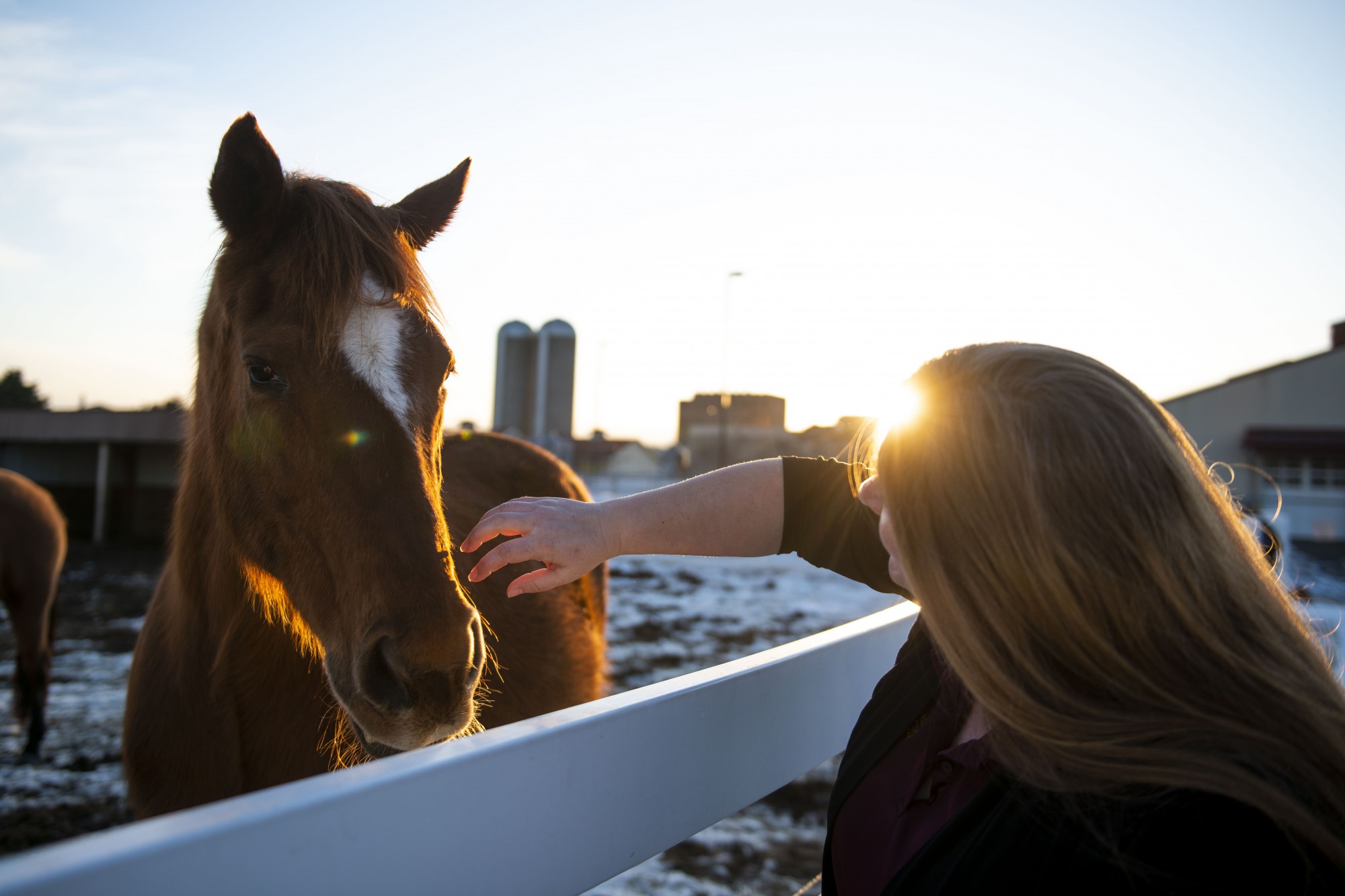University of Minnesota professor Krishona Martinson never anticipated her career would include composting dead horses.
Since July, a team of specialists at the University has been studying the impacts of horse carcass composting as an alternative to the current means of disposal, which include burial and cremation.
Their research has shown that composting has many positive soil benefits and is an easy and humane way to dispose of horses after they have died.
“Horses are classified as livestock in Minnesota, but people tend to have a very individualized relationship with horses,” said Martinson, an owner of five horses. “So, when a horse dies, whether expectedly or unexpectedly, it’s very hard for an owner.”
Martinson said that she believes composting is a dignified way to celebrate a horse’s life.
The composting of other livestock in Minnesota is a relatively common practice, but not with horses.
Horse owners do not have many disposal options, Martinson said. And with over 145,000 horses in the state, deciding where to put them has become a problem.
Burial is difficult because the carcass must be a certain distance from bedrock and sources of water. Cremation can be expensive, as is taking a horse to a landfill, which usually charges owners by the pound.
Currently, most Minnesotans render their horses, meaning a company will pick up the body and take it to a facility where it will be processed for products like dog food and animal feed.
As of February 2018, a major horse renderer in Minnesota, Central Bi-Products, announced it would no longer pick up horses that had been chemically euthanized as a precaution against contamination in food products.
Since a majority of horses die by chemical euthanasia, Martinson said this has been a significant problem for horse owners, which makes her work even more timely.
“This project is really important on a lot of fronts,” she said. “Right now there are no commercial facilities [for horse composting], but this research most certainly could lead to the approval of one if we can show that it works.”
The team uses composting materials that are generally available on most farms.
The horse compost pile rests on a concrete slab. First the team puts down a base layer of wood chips, which allow for airflow and help the decomposition process, said University soil specialist Melissa Wilson, who is also working on the project.
The chips are followed by a layer of thin wood shavings which the body rests on. The top of the horse is then covered in a mixture of manure and bedding, which provides the pile with nutrient-rich microbes that aid in the composting process.
“One of the neat things about composting that I particularly like is it kind of closes nature’s life cycle,” Wilson said. “Eventually we die, our remains decompose and the nutrients affect the soil for new things to grow.”
So far, their research has shown that a horse can decompose in as little as 10 weeks.
The process is also something that can be done in the winter, which has been a problem for horse owners who have difficulty burying horses when the ground is frozen.
To help educate horse owners about the process, the team has given a demonstration at its composting site, as well as filmed videos and created an online course about horse composting through UMN Extension.
“I think the problem is that people just don’t know about it,” said Alex Bianco, an assistant professor in the Department of Veterinary Population Medicine. “It seems very daunting to do and that’s part of our goal to … convince people that it’s an option.”














